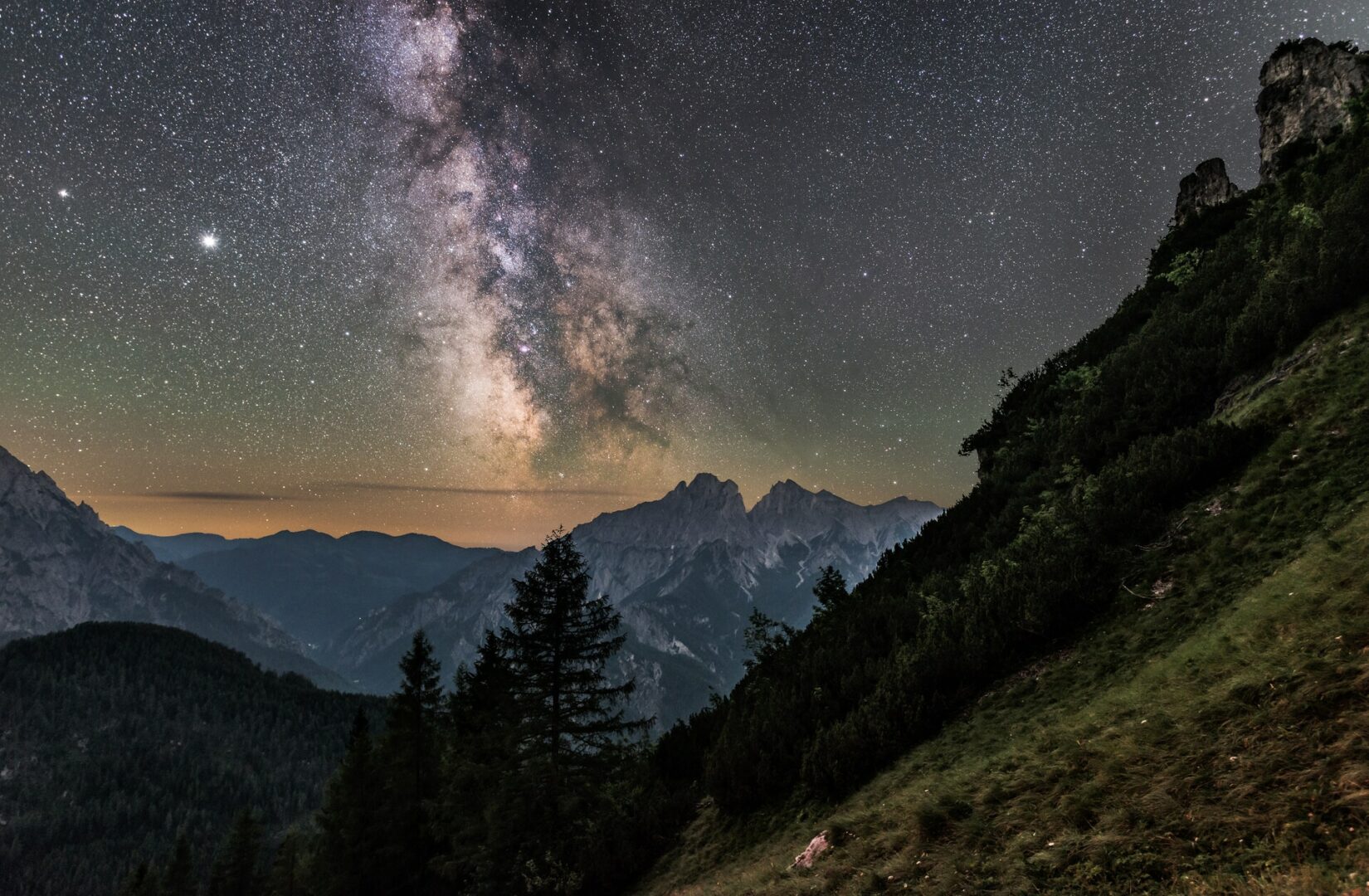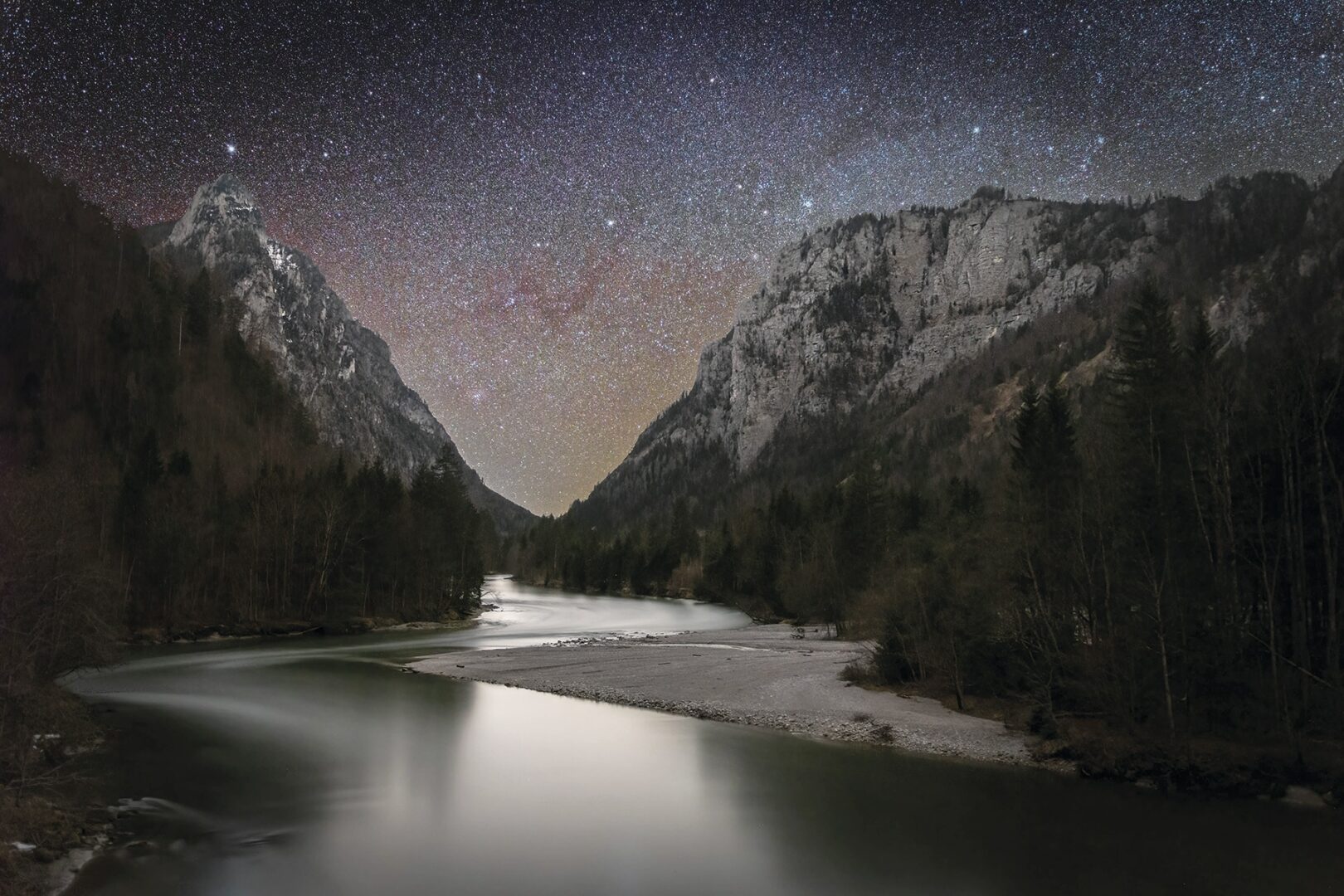


The Gesäuse owes its dark starry sky to its geographical location, because Austria's largest cities Vienna, Graz, Salzburg and Linz are quite far away from the Gesäuse. It lies, so to speak, exactly in the dark middle between these metropolises.
Admittedly, it rains more often in the Gesäuse. The average annual precipitation ranges from 1162 mm in Admont to 1584 mm in Hieflau, but when the sky is clear and cloudless, the stars shine with a clarity that can only be found in very few places in Central Europe. 6000 stars are visible to the naked eye. A look at the light pollution map illustrates the special location of the Gesäuse: www.lightpollutionmap.info.
Die Nacht ist allerdings für Wildtiere eine sehr sensible Zeit: Nur dann können sie sich ungestört in ihrem Lebensraum bewegen. Für unsere Gäste bedeutet das, von Touren ins Gelände nachts abzusehen. Besonders gut erleben lässt sich der Sternenhimmel im Gesäuse ohnehin am Besten rund um das National Park Centre Willow Dome in front of the impressive backdrop of the Hochtor group, in the back Johnsbachtal valley e.g. Kölblwirtor around Buchau alpine pass (Parkplatz mit Ausgangspunkt zur Grabneralm). Das sind leicht zu erreichende Ziele, um die Wildtiere nicht zu sehr zu stören.
Im Süden der Bundesländer Oberösterreich und Niederösterreich sowie im Norden der Steiermark bemüht man sich, die Dunkelheit der Nacht in Form eines Lichtschutzgebietes unter Schutz zu stellen. Den aktuellen Stand der Bemühungen findet man hier:
The Gesäuse National Park has been offering nighttime photo workshops and dates for "Sternderl-Schauen" (stargazing) for several years. You can find these below.
Here you will find suitable events at which you can experience the special features of the dark sky in the Gesäuse National Park. You can find more about our events in our Calendar.